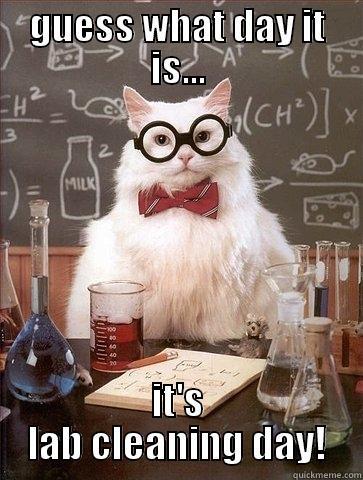There is no such thing as being too safe when experimenting in the laboratory. Follow these 6 easy steps to practice safe housekeeping in the laboratory.
1. Determine potential hazards. Be prepared for hazards that may likely happen by starting to review what has recently changed in the laboratory. If a change releases a trigger, that trigger then reveals that the specified change needs further examination. Document the change so that the potential hazard is universal among others in the laboratory.
2. Familiarize yourself with the equipment you will be working with. After identifying potential hazards, notice if there are new tools that have been added to the laboratory. Before using the new tool, be aware of the functionality of the tool and the implied hazard that could be associated with it. Properly alert other members of the lab, to make sure they are all up to speed on the new piece of equipment.
3. Read through the MSDS (Material Safety Data Sheet) on site. If you are unsure of a chemical in the lab, the MSDS should have the information that you need. Whether it be how to properly dispose of a chemical, or use of the chemical, the MSDS will properly guide you to the safe and appropriate method. The MSDS is composed of distinct sections for quick and easy reference.
4. Dress in appropriate gear. Upon entering the lab, there is no excuse to wearing open-toed shoes or not wearing a lab coat to protect against spilled chemicals. Hair should be pulled away from face, safety goggles secured, and safety gloves should be worn.
5. Test emergency showers and eyewashes. By ANSI Z358.1 standard, it is a requirement to test emergency eyewashes and showers on a weekly basis. In the case of an accident in the laboratory, the shower or eyewash should sustain a full 15-minute drench period in water that is between 60°F – 100°F and be sediment free.
6. Thoroughly clean following an experiment. Publish a checklist for the lab that lists the steps to insuring the lab is properly cleaned after the experiment is performed. Be clear on where tools must be properly stowed, that surfaces are wiped clean, and emergency equipment is obstruction free. Designate a safety lead to direct the clean up.
If your laboratory is in need of new safety equipment, check out this lab products brochure.




